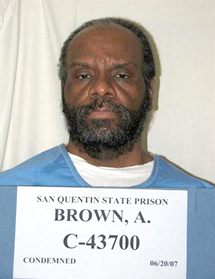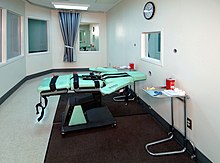
Sodium thiopental, also known as Sodium Pentothal, thiopental, thiopentone, or Trapanal, is a rapid-onset short-acting barbiturate general anesthetic. It is the thiobarbiturate analog of pentobarbital, and an analog of thiobarbital. Sodium thiopental was a core medicine in the World Health Organization's List of Essential Medicines, but was supplanted by propofol. Despite this, thiopental is listed as an acceptable alternative to propofol, depending on local availability and cost of these agents. It was previously the first of three drugs administered during most lethal injections in the United States, but the US manufacturer Hospira stopped manufacturing the drug in 2011 and the European Union banned the export of the drug for this purpose. Although thiopental abuse carries a dependency risk, its recreational use is rare.

Lethal injection is the practice of injecting one or more drugs into a person for the express purpose of causing rapid death. The main application for this procedure is capital punishment, but the term may also be applied in a broader sense to include euthanasia and other forms of suicide. The drugs cause the person to become unconscious, stops their breathing, and causes a heart arrhythmia, in that order.

The electric chair is a specialized device employed for carrying out capital punishment through the process of electrocution. During its use, the individual sentenced to death is securely strapped to a specially designed wooden chair and electrocuted via strategically positioned electrodes affixed to the head and leg. This method of execution was conceptualized by Alfred P. Southwick, a dentist based in Buffalo, New York, in 1881. Over the following decade, this execution technique was developed further, aiming to provide a more humane alternative to the conventional forms of execution, particularly hanging. The electric chair was first utilized in 1890 and subsequently became known as a symbol of this method of execution.
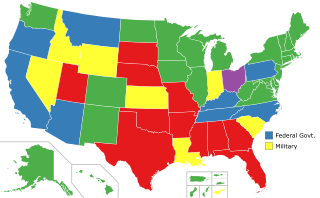
In the United States, capital punishment is a legal penalty throughout the country at the federal level, in 27 states, and in American Samoa. It is also a legal penalty for some military offenses. Capital punishment has been abolished in 23 states and in the federal capital, Washington, D.C. It is usually applied for only the most serious crimes, such as aggravated murder. Although it is a legal penalty in 27 states, 19 states currently have the ability to execute death sentences, with the other 7, as well as the federal government and military, being subject to different types of moratoriums.

In the U.S. state of California, capital punishment is not allowed to be carried out as of March 2019, because executions were halted by an official moratorium ordered by Governor Gavin Newsom. Before the moratorium, executions had been frozen by a federal court order since 2006, and the litigation resulting in the court order has been on hold since the promulgation of the moratorium. Thus, there will be a court-ordered moratorium on executions after the termination of Newsom's moratorium if capital punishment remains a legal penalty in California by then.
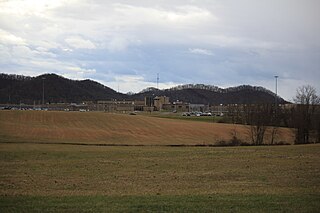
Capital punishment is a legal penalty in the U.S. state of Ohio, although all executions have been suspended indefinitely by Governor Mike DeWine until a replacement for lethal injection is chosen by the Ohio General Assembly. The last execution in the state was in July 2018, when Robert J. Van Hook was executed via lethal injection for murder.
Capital punishment is a legal penalty in the U.S. state of Nebraska. In 2015, the state legislature voted to repeal the death penalty, overriding governor Pete Ricketts' veto. However, a petition drive secured enough signatures to suspend the repeal until a public vote. In the November 2016 general election, voters rejected the repeal measure, preserving capital punishment in the state. Nebraska currently has 12 inmates on death row.

San Quentin Rehabilitation Center (SQ), formerly known as San Quentin State Prison, is a California Department of Corrections and Rehabilitation state prison for men, located north of San Francisco in the unincorporated place of San Quentin in Marin County.

Donald Jay Beardslee was an American serial killer who murdered three women. While on parole for killing a woman in Missouri in 1969, Beardslee murdered two more women in California. He was sentenced to death and executed by lethal injection in San Quentin State Prison in 2005.

Marilyn Hall Patel is a former United States district judge of the United States District Court for the Northern District of California.
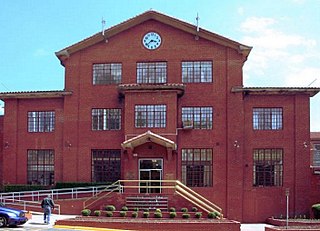
Capital punishment is a legal penalty in the U.S. state of Texas for murder, and participation in a felony resulting in death if committed by an individual who has attained or is over the age of 18.
Kenneth Biros was an American convicted murderer who was sentenced to death and executed for the aggravated murder, attempted rape, aggravated robbery and felonious sexual penetration of a young woman. Biros was the first condemned person to be executed by lethal injection in the United States with the use of a single drug, setting a Guinness World Record.

Opened in 1969, Georgia Diagnostic and Classification Prison (GDCP) is a Georgia Department of Corrections prison for men in unincorporated Butts County, Georgia, near Jackson. The prison holds the state execution chamber. The execution equipment was moved to the prison in June 1980, with the first execution in the facility occurring on December 15, 1983. The prison houses the male death row, while female death row inmates reside in Arrendale State Prison.

Jeremy Don Fogel is a former United States district judge of the United States District Court for the Northern District of California. Fogel was appointed by President Bill Clinton. He was a judge for the municipal court and superior court of Santa Clara County, California from 1981 to 1998. He served as Director of the Federal Judicial Center from 2011 to 2018.
The execution of Jeffrey Timothy Landrigan, who had been convicted of murder in the state of Arizona, was carried out on October 26, 2010, by lethal injection.

John David Duty was an American who was executed in Oklahoma for first-degree murder. According to the Oklahoma Department of Corrections, he was the first person in the United States to have been put to death with pentobarbital. A nationwide shortage of sodium thiopental led the state to incorporate the substitution into its protocol for lethal injections. Duty's case gained media attention because pentobarbital had typically been used to euthanize animals.

David Allen Raley is a convicted murderer and currently on San Quentin's death row. He was convicted of first-degree murder in the death of Jeanine Grinsell, aged 16, and attempted murder of Laurie McKenna, aged 17. The two girls were attacked and kidnapped on February 2, 1985, at the Carolands mansion in Hillsborough in San Mateo County, where Raley, then aged 23, was working as a security guard.
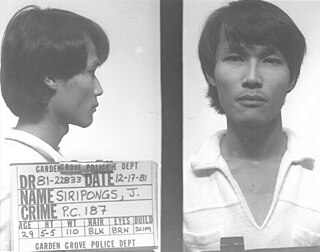
Jaturun Siripongs was a Thai national who was executed by the state of California for the December 1981 murders of two people during a robbery in Garden Grove, California. Siripongs maintained that he was involved in the robbery but was not the actual killer. Ultimately, he was convicted and sentenced to death in 1983 and was subsequently executed in 1999 at San Quentin State Prison by lethal injection.
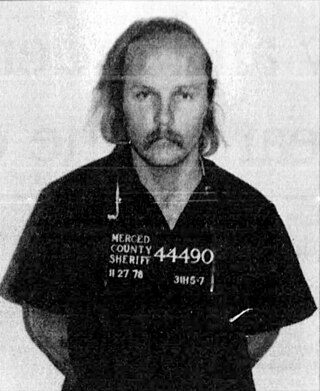
Keith Daniel Williams was an American triple murderer who was executed by the state of California for the October 1978 murders of three people in Merced, California. He was convicted and sentenced to death in 1979 and was subsequently executed in 1996 at San Quentin State Prison by lethal injection.

The execution of John Grant took place in the U.S. state of Oklahoma by means of lethal injection. Grant was sentenced to death for the 1998 murder of prison cafeteria worker Gay Carter.
